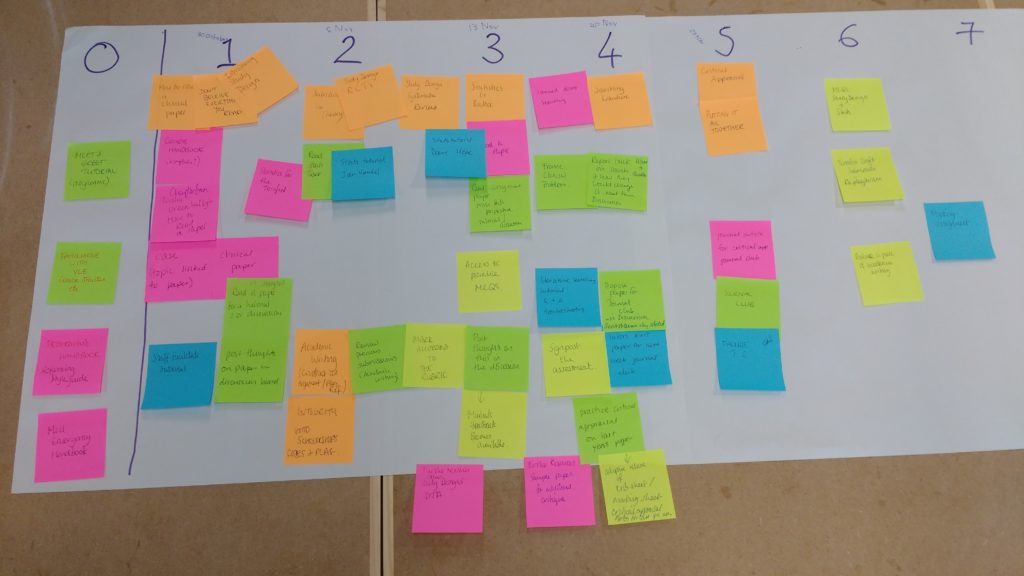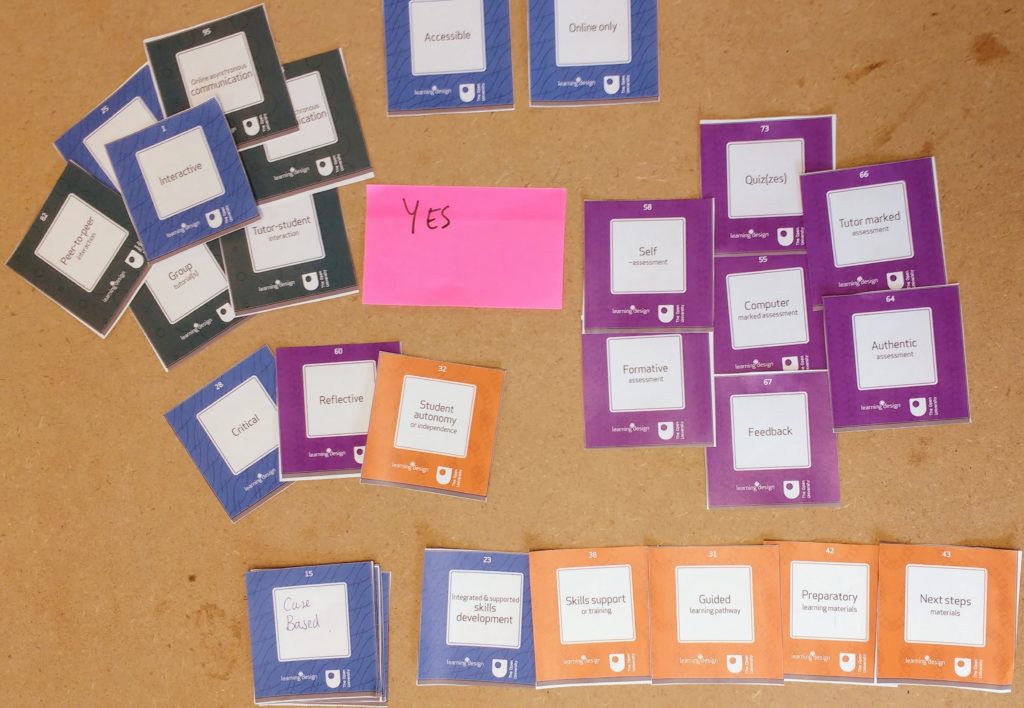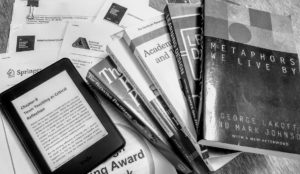In my work I draw on a range of evidence sources, research, theory, expertise from colleagues and reflection on my own experience.
CMALT project was conceived in response to an institutional focus on developing digital capabilities in a learning and teaching context:
“Many more students benefiting from the Edinburgh experience (largely or entirely) in their own country – supported by deep international partnerships and world-leading online distance learning”
“enabling our staff to embrace new technologies as part of enhancing the learning experience, and to deliver prompt and effective feedback”
It was informed by Jisc’s Building Digital Capacity project based on the work from 2014 on developing digital literacies itself based on the outcomes of 12 institutional projects aimed to:
“to promote the development of coherent, inclusive approaches to digital capability across institutions of further and higher education” (Sheppard, 2014).
I spoke to ALT for advice when setting it up the CMALT scheme who introduced me to managers of schemes at The Bloomsbury Learning Environment (BLE) and University College London (UCL) so that I had informed evidence on which to base my decisions in setting up the scheme here (V3).
Sarah Sherman manager of the BLE cohort shared her session plans and online course in Moodle so I could see the structure. We now speak regularly – it’s really helpful to talk to someone who understands the context but is outside of my institution and can be more objective about the situation (V3). We continue to work together as our schemes develop and have since presented together (Greig & Sherman, 2017a, 2017 b).
I sought advice from Daphne Loads who run the U of E HEA scheme (EDTA) as this is a similar reflective portfolio based submission also based round the UKPSF – to learn about how they support their candidates. I invite Daphne to talk to CMALT applicants about reflection, as this is a difficult concept for applicants. After the session I share references about reflective practice – these range from advice of jobs.ac.uk (nd.) to the more scholarly Moon (n.d.) the guidance selected is pragmatic – I want the students to move quickly to writing and come to understand reflection through that route, as well as via the theory (V3).
Learning Design is a new field with a strong base of theory and developing research which explores ways to “assist educators to describe effective teaching ideas so they can be shared with and adapted by, other educators”. (Dalziel et al., 2016). Dalziel et al in the Larnaca Declaration (2016) use an analogy with the development of a standard music notation to allow musicians to share and reproduce musical ideas over time – suggesting the need to develop an ‘educational notation’ for a similar purpose. They define several aspects to Learning design:
- Learning Design Conceptual Map (LC-CM)
- Learning Design Framework (LD-F)
- Learning Design Practice (LD-P)
My interpretation is that Learning design in both an approach for staff to consider their teaching (LD-P) and process for facilitating this (LD-F) and a way of making visible design approaches so they can be used and reused (LC-CM).
The U of E piloted a Learning Design Service the Edinburgh Learning Design roadmap (ELDeR) from 2015 having review several learning design frameworks, e.g. ABC curriculum design model from UCL, it was decided to base our approach on CAIeRO (Creating Aligned Interactive educational Resource Opportunities) model by the University of Northampton which we were able to adapt and use under a creative commons licence. This is a two day structured workshop for programme or course design attended by the teaching team. I have facilitated workshops for courses and programmes in subject areas including. Medicine, Nursing, Law and Vet Medicine. Before the introduction of ELDeR it was very unusual at U of E for programme or course design to be approached in this way – bringing staff together for two days can be a very intense experience and many of them struggle to clear their diaries for two days. Working over two days is beneficial – often teams are dispirited after the first day – but come back refreshed and rejuvenated for the second day. Problems identified on the first day seem more manageable after a nights sleep and they often return with suggested solutions.

Green for the learner activities
Blue for tutor activity
Yellow for assessments and feedback
Pink for resources / content
I find the card sort exercise particularly helpful – I give participants Course Features cards which were created by the JISC-funded Open University Learning Design Initiative. the task for each group is to pick the 6 cards that are most important to their teaching approach/concept. This is a great equaliser because it means that everyone is working from the same pedagogic vocabulary – it also means they argue with the terms on the card rather than with each other – depersonalising the experience.

Farmer, R. & Usher. J (2018) reviewed use of CAIeRO over a 10 year period – CAIeRO itself was was derived from Carpe Diem developed 2002 allowing them to draw on a larger literature of review of both schemes. They conclude that Learning Design workshops go considerably beyond what is generally considered staff development and that they are transformative for participants – in that they encourage participants to reflect on and re-examine the way they teach. That aligns with my experience of facilitating the workshops and with the positive feedback from attendees.

References
ABC Learning Design. UCL. http://blogs.ucl.ac.uk/abc-ld/ (accessed 17/07/18)
Dalziel, J, Conole, G. wills, S., Walker, S., Bennett, S., Dobozny, E., Cameron, L., Badilescu-Buga, E., Bower, M. (2016) “The Larnaca Declaration on Learning Design -2013” in Dalziel, J. (ED) Learning Design: conceptulizing a framework for teaching and learning online. Taylor & Francis, Oxon.
Friedman, A. & Phillips, M.(2004) Continuing professional development: Developing a vision, Journal of Education and Work, 17:3, 361-376 athttp://dx.doi.org/10.1080/1363908042000267432
Greig, S. and Sherman, S (6 September 2017a) ALT Conference 2017 The CMALT “Zumba Class”: managing a cohort scheme for CMALT applicants to build institutional capacity for learning technology [1788]
Greig, S. and Sherman, S (13 December 2017b) ALT Winter Conference 2017, The CMALT “Zumba Class”: managing a cohort scheme for CMALT applicants to build institutional capacity for learning technology [1213] Session recording available at http://go.alt.ac.uk/2Bj1dNO
Farmer, R. & Usher. J (2018) Why CAIeRO? Perceptions of ten years of CAIeRO at the University of Northampton.
jobs.ac.uk (nd.) What is Continuing Professional Development? (accessed 17/07/18)
JISC (2014) Developing Digital Literacies
Shepard, M. (2014) Jisc The Design Studio Developing digital literacies. (Accessed 17/07/18)
Moon, J. (n.d.) Resources for Reflective Learning